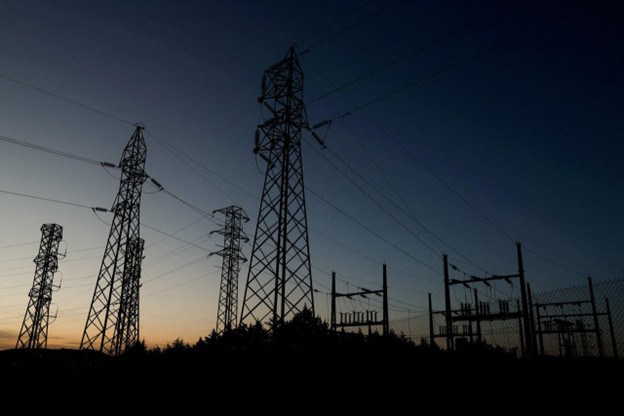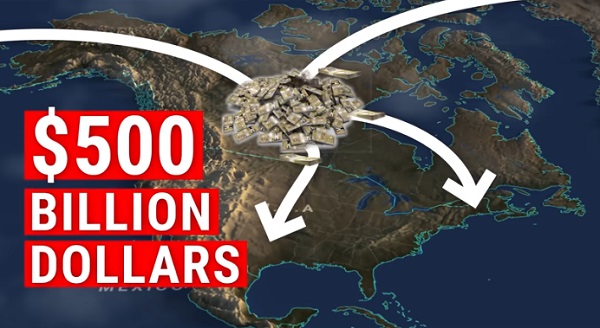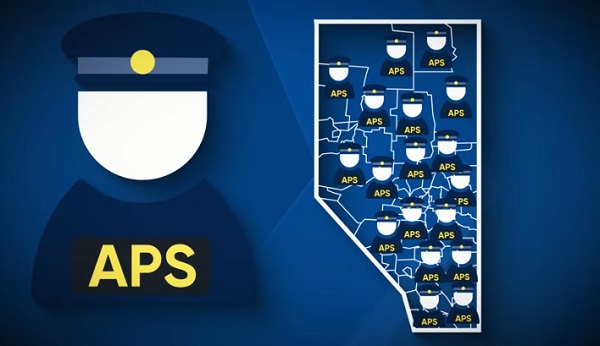C2C Journal
They Would Call Me a “Denier” – Let Me Explain what I Believe about Residential Schools in Canada
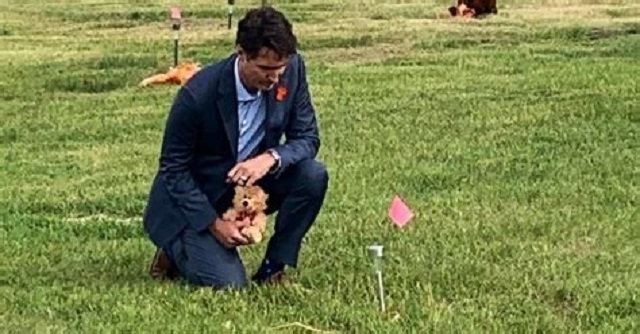
From The Frontier Centre for Public Policy
Originally posted in the C2C Journal by Rodney A. Clifton
In our largely “post-truth” society, the validity of a given statement is increasingly assessed based on who is making it. There are even those who believe that only some should be allowed to say certain things – while others should be scorned or even imprisoned for uttering the same words. This increasingly describes the discursive landscape concerning Canada’s Indian Residential Schools and whether Indigenous children disappeared from and/or were murdered there. Drawing on his lived experience as a onetime residential school employee, on his long academic record and, not least, on his personal courage in the face of those who wish to criminalize “denialism”, Rodney Clifton presents a humbly argued plea for Canadians to judge their country’s residential school record according to the truth – the actual, factual truth.
Over the last several years a new subspecies of Canadian has been named by some of our elites. They are called “deniers” and are said to be escalating a hateful, racially-motivated campaign to attack and denigrate Indigenous Canadians. The accusations have been numerous. One important recent example comes from Stephanie Scott, Executive Director for the National Centre for Truth and Reconciliation, who wrote, “Sadly…we see increased ugliness from those who deny our truths, experiences and oral histories as reality. Deniers will write their fringe blogs and substacks and leave their foul comments on social media challenging the documented experiences of Indigenous People, particularly residential school Survivors…They will say: ‘It didn’t happen,’ ‘It wasn’t that bad,’ ‘Some good came out of residential schools,’ or the most repugnant, ‘Children never died in those institutions.’”

Kimberly Murray (top), Canada’s Special Interlocutor for Missing Children and Unmarked Graves and Burial Sites, deems Indian Residential School (IRS) “denialism” to be “violence” and “hate”, while Indigenous lawyer Eleanore Sunchild (bottom) calls for its criminalization in Canadian law. (Sources of photos: (top) The Canadian Press/Justin Tang; (bottom) Jason Warick/CBC)
The deniers are apparently so dangerous that mere vitriol, insult, accusation and denunciation such as Scott’s won’t be enough to contain them. They must be driven from the public square and silenced; if need be, they must be imprisoned. Last summer, prominent Indigenous lawyer Eleanore Sunchild suggested that “denialism” should be added to Canada’s Criminal Code, so that there are “consequences for people who are promoting hatred”. Not long thereafter Kimberly Murray, currently the federal government’s “Independent Special Interlocutor for Missing Children and Unmarked Graves and Burial Sites associated with Indian Residential Schools”, echoed that proposal. “Denialism is violence,” Murray intoned in one news conference. “Denial is hate.” The then-federal Minister of Justice, David Lametti, said he would explore the matter of criminalization, as has his successor, Arif Virani.
The anti-“denialist” campaign now appears self-sustaining. Barely a week ago as I was writing this essay, the federal NDP Leader Jagmeet Singh in a speech to Indigenous leaders accused a federal Conservative Party candidate, Aaron Gunn, of being a “residential school denier”. Also in the past week, the National Post’s Chris Selley reported that the RCMP now consider writing articles critical of the dominant residential schools’ narrative to be a potential threat to national security.
It is likely that Scott, Sunchild, Murray, Singh and perhaps our national police force would think that I too am a “denier”. By their standards, I suppose I am. But before you dismiss me as uninformed – or worse – let me explain what I actually believe. I am one of a number of informed Canadians who question some – but not all – of the claims about what happened to Indigenous children in Indian Residential Schools (IRS). If you must label us, call us “questioning critics”.
Were Children Missing and Murdered?
Questioning critics examine the claim that thousands of Indigenous children who lived in residential schools and hostels are missing and that this is because many if not most of them were murdered by their caregivers. These institutions were funded by the federal government from 1883 to 1996 and the majority were managed by five Christian churches: Roman Catholic (62 schools and hostels), Anglican (35), United Church (19), Mennonite (3) and Baptist (1); the 23 others were managed by federal, provincial and territorial governments (source of these figures is pp. 33-35 of this book).

The majority of Canada’s IRS were run by Christian churches; the claim that many children who attended the IRS went missing or were murdered has brought disgrace to the churches, which have not defended themselves against such accusations. Shown, (top) boys at play outside Fort Providence Mission Indian Residential School, N.W.T.; (bottom) children and nuns in front of the IRS in Maliotenam, Québec, circa 1950. (Sources of photo: (top) Library Archives, licensed under CC BY 2.0; (bottom) Library Archives, licensed under CC BY 2.0)
The claim that thousands of schoolchildren were murdered or otherwise went missing is therefore a direct attack on the churches. But these churches, surprisingly, have not defended themselves and their thousands of former employees. Instead, they have either tried to hide from view or have fallen over themselves with repeated apologies, confessions and gestures of contrition. The Catholic Church’s “Sacred Covenant” with the Tk̓emlúps te Secwépemc First Nation (legally, the Kamloops Indian Band), described in this C2C article, is one such recent event.
Even so, the accusations against the IRS are difficult to believe for at least four reasons.
First, the federal Department of Indian Affairs (its exact name has varied over the decades) paid a per capita grant to the school administrators to care for the children and, as part of its oversight, the government required quarterly reports from school administrators showing the number of days each child had been at the school during the quarter. School inspectors regularly visited the schools to ensure that the students were being cared for and were attending. Even if Canadians today can’t believe that these officials cared about Indigenous children, the federal government wasn’t going to pay for students who didn’t exist or had disappeared. Yet we cannot find any documents indicating that any children were missing during the IRS system’s 113-year history.
Second, many responsible people, Indigenous as well as non-Indigenous, regularly visited the residential schools: chiefs, band councillors, parents, church officials and bureaucrats, along with dentists, medical doctors, nurses and optometrists. If students were going missing, surely someone among these many people would have discussed it with colleagues, raised the alarm among parents, notified the media or reported it to the proper authorities. Yet we cannot find any reports about missing children from any of these people.
Third, many of the residential school employees were themselves Indigenous, and their own children as well as the children of relatives and friends lived in the schools. Is it reasonable to assume that these employees would watch (or hear about) children being mistreated, or worse, murdered, and not report the malfeasance to Indian agents, chiefs, band councillors or the RCMP? Again, we can find no documents of any such thing happening.

Right under everyone’s noses? Children at the IRS were regularly observed by Indigenous and non-Indigenous visitors including bureaucrats, doctors, nurses, parents and chiefs; the author finds it very difficult to believe that children would go missing unnoticed or unreported. At right, a schoolchild and his grandmother at the St. Barnabas Indian Residential School mission hospital, Sarcee Reserve, Alberta. (Sources of photos: (left) The Canadian Press/Library and Archive Canada/Handout, retrieved from Global News; (right) Anglican General Synod Archives in Toronto)
Finally, questioning critics wonder why the extremely serious accusation of missing and murdered children – including some reportedly buried in schoolyards – was not included in the enormous, seven-volume report of the Truth and Reconciliation Commission (TRC), published in 2015. It seems strange that among the report’s 94 Calls to Action (i.e., recommendations or demands), there isn’t one demanding a search for children who were claimed to be missing, murdered or buried in schoolyards. (Volume 6 has six calls, numbers 71-76, to search for unmarked graves in mission cemeteries lying close to residential schools, but any child who had been buried in a formal ceremony was obviously not missing or murdered.) Questioning critics also wonder why the mainstream media didn’t report on this obvious anomaly.
This whole issue seems to have sprung up recently and for still-unknown reasons. It seems reasonable to propose that if children were murdered in residential schools, that information would have been reported long before May 27, 2021, when Kamloops Chief Rosanne Casimir announced that a recent investigation had provided “confirmation of the remains of 215 children who were students at the Kamloops Indian Residential School.” The federal government sent almost $8 million to the band to investigate this claim but, so far, no excavations have even been initiated, let alone have any human remains been exhumed.
Of course, informed Canadians know that bad, abusive and unacceptable things took place in residential schools. Neither I nor any other questioning critic whom I know denies this or tries to suppress it. No one, in fact, denies that some Indigenous children died while registered in some schools. Nor do I have any reason to doubt the statement by former Assembly of First Nations Grand Chief Phil Fontaine that he had suffered sexual abuse while attending an IRS, something that, undoubtedly, shocked the nation when he first said it in a TV interview in 1990.

Why now? The author finds it puzzling that the issue of missing or murdered children, such as the “confirmation of the remains of 215 children” erroneously claimed by Kamloops Chief Rosanne Casimir (top) in May 2021, did not arise years earlier, nor was mentioned at all in the seven-volume report of the Truth and Reconciliation Commission (TRC) published in 2015. (Sources of photos: (top) BC Gov Photos, licensed under CC BY-NC-ND 2.0; (bottom) megan.mason, licensed under CC BY 2.0)
Volume 4 of the TRC Report states that a total of 3,201 IRS students died (see pp. 33-35 of the linked document), mostly in the early years and mostly from infectious diseases like influenza and tuberculosis. Unfortunately, the Commission did not provide comparison data on the number of Indigenous children who died but were not in IRS, or the number of non-Indigenous children who died of the same diseases during the same period. Thus, the TRC Report leaves readers with the impression that residential school students died at much higher rates than children who did not attend residential schools. To verify this claim, more detailed analyses are needed.
My Experience with Indian Residential Schools
Questioning critics also suggest that some good things happened, at least in some schools. This would be one point of “agreement” with Scott, who as I explained above accuses “deniers” of (falsely, in her mind) asserting that some good came out of residential schools. I have had direct experiences that speak to this point.
I lived in an Anglican Church-run residential school, Old Sun (which like about 40 percent of the IRS bore an Indigenous name, in this case that of a famous Chief), on the Siksika First Nation (Blackfoot Reserve) in southern Alberta during the spring and summer of 1966. I was a university student intern working for the Band, and I had a room in the teachers’ wing at Old Sun. I saw what staff and students were doing and I heard the languages they were speaking. In fact, the Indigenous employees in the school and the Band Office were eager to teach me Siksika.
After the summer internship I got a job in the far north for the 1966-1967 school year, working as the Senior Boys’ Supervisor in Stringer Hall, the Anglican hostel in Inuvik, NWT. In that position, I managed the daily activities of 85 mostly Indigenous boys in three dorms, being on duty for 22 hours a day, six days a week. I kept notes about what I saw and what the children said and did.

As a living witness to life at two residential schools in the 1960s, the author recalls his overwhelmingly positive experiences at Old Sun Indian Residential School, Blackfoot Reserve, Alberta (top) and at Stringer Hall, Inuvik, N.W.T. (middle and bottom), of which he kept detailed records.
During my time at Old Sun, I met a young Siksika woman, Elaine Ayoungman. We fell in love and were married in 1968, and we’re still married today, 56 years later. Elaine attended Old Sun for 10 years. Her parents and most of her nine siblings also attended the same school, and over the years I heard many accounts of their experiences.
As a researcher, I have published several articles on the relationship between Indigenous and non-Indigenous people. My first article on the integration of Dene, Inuit, Metis and non-Indigenous children in Stringer Hall was published in 1972, long before the current controversy about missing residential schoolchildren was in the news. Still, even with my experience and knowledge, and following a nearly 50-year-long academic and public policy research career, I am now to be considered a “denier”.

“Many students…have spoken positively about the impact that specific teachers had on their lives,” admitted the TRC Report, which also contains happy reminiscences and quotations from former IRS students; anyone making similar statements today is quickly denounced as a “denier” – and some even want them criminally charged and imprisoned.
These are just two of the positive, even heartwarming statements recounted in the TRC Report. It is sad that more Canadians have not read these stories; I hope some of you do so while you still can. Scott, Sunchild, Murray and others not only want me prevented from writing and speaking on this subject, some of them would want me sent to prison – merely for repeating what I personally witnessed, physically experienced, noted in writing at the time, and which, in a number of instances, closely corresponds to what was formally recorded in the TRC Report.
What is it We Are Really Questioning?
Among the strangest aspects of the campaign to prevent questioning of the official IRS narrative is the recurring claim that critics “deny residential schools”, as if some people are pretending the IRS system never even existed. For example, in Murray’s call for “denialism” to be made a crime, she stated that one of the sanctioned offences would be “denying that residential [schools] happened.” Another instance came during the recent eruption in Quesnel, B.C. over the local mayor’s wife’s decision to share a controversial book with a few friends. One media account claimed the book in question, the best-selling Grave Error: How the Media Misled Us (and the Truth about Residential Schools), “questions the existence of residential schools.”
This is utterly bizarre. Possibly it reflects seriously slipshod thinking and writing; perhaps it’s an attempt to make the critics appear plain crazy. But I know of no-one who denies that residential schools existed and operated for over a century. As for me, remember that I lived and worked in two of them and I married a woman who attended one for 10 years at a time when fewer than 30 per cent of Indigenous children were enrolled in residential schools and the average time they spent was less than five years (see pp 29-33 of this book).
I do, accordingly, question that 150,000 Indigenous children were torn from the arms of their crying mothers and forced to go to school against their parents’ wishes, as the current narrative constantly claims. Even in the early days, most parents signed admission forms to enroll their children in school. When I worked at Siksika First Nation, I travelled around the reserve registering children for school, and I cannot remember any parent who was reluctant to complete the registration forms or any child who did not look forward to going to school.

The author’s personal experiences call into question the widespread belief that Indigenous children were forcibly removed from their families to attend residential school; on the contrary, it was common for parents to sign a school enrollment form. Shown at left, The Scream, by Kent Monkman, 2017; at right, the application by Susan Drever for admission of her daughter Neta Drever to the Birtle Indian Residential School.
When I asked my mother-in-law, Nora, what she learned in Old Sun, she replied, “I’m talking to you, aren’t I?” She meant that she was speaking English, which she learned from her residential schoolteachers. Nora also implied that, thanks to learning English, she was able to communicate with other Indigenous people who did not speak Siksika, her mother tongue.
Of course, my mother-in-law thought that going to school and learning to speak, read and write in English was an advantage. But I would not call her or my wife “deniers”. All members of the Ayoungman family spoke Siksika fluently and took part in many cultural activities. Their time in residential school did not wipe out or even weaken their Indigenous culture or identity – but it did prepare them to deal with and navigate in modern-day Canada. (There is a fuller account of my time working at residential schools in this C2C article.)
The above exchange occurred as we were driving back to Winnipeg from the 1993 National Native Convocation in which the Anglican Archbishop and Primate, Michael Peers, apologized to Indigenous people, many of whom had attended the 35 schools and hostels managed by the Anglican church. There were frank and open discussions during the conference, but no one suggested that hundreds, let alone thousands, of children were missing and probably buried in residential schoolyards.

In August 1993, Anglican Archbishop and Primate Michael Peers delivered an apology to the National Native Convocation; while the three-day discussion included many testimonies of former IRS students, none mentioned missing or murdered children. (Source of photo: The Anglican Church of Canada)
As well, informed Canadians and the questioning critics know that in southern Canada, many residential school students went home on weekends and during school holidays. If children were abused by other children or by residential school employees, some of them surely would have told their parents, who would have reported the abuse to Indian agents, chiefs or members of the band councils. But we have found no reports from these people.
Although the next thing will surprise and perhaps even shock readers who have only been exposed to the official narrative about residential schools, I swear this to be the truth: almost all the stories I heard about residential schools and hostels were about positive and humorous things that happened. These included the sports days, Halloween and Christmas parties, the tricks the children played on their supervisors (myself included), or the fact that the schoolkids tried to teach staff like me their native language.
I did, however, hear from my parents-in-law about one case of abuse. Their oldest daughter, Rosella, who was about 9 or 10 at the time, had been forced by her residential supervisor to eat her breakfast cereal after she had thrown-up in the bowl. Rosella told her father, Arthur, about this incident when she was home for the weekend. When the family returned to Old Sun for Sunday church service, her father and grandfather, Anthony, met with the Anglican priest/principal, who listened to their complaint. Within a few days, the supervisor was fired.
Obviously, this quick action did not happen in all cases. And again: neither I nor any of the other questioning critics with whom I’m familiar denies that serious abuses occurred in residential schools, that these abuses were wrong, and that the abusers should have been more effectively investigated and punished. Nevertheless, my example illustrates that at least in some schools, the administrators supported the children under their care and held their staff to account. The TRC Report does not, unfortunately, tell us how many school administrators and supervisors acted honourably towards the children. Instead, it leaves the impression that all residential school employees, both non-Indigenous and Indigenous, treated the children as if they were sub-human (see Volume 5, pp 139-140).

The author’s personal recollections about residential schools are largely positive and many are light-hearted or even humorous. Shown at top left, Christmas presentation at Portage la Prairie Residential School, Manitoba, 1950s; at bottom left, Portage Residential School hockey champion team, Manitoba, 1964. (Sources of photos: (top left) UCCA, 1986.158P/59; (bottom left) UCCA, 1986.158P/62; both retrieved from The Children Remembered; (right) Library Archives, licensed under CC BY 2.0)
For all these reasons, I am skeptical of some – but not all – of the things being claimed about the church-run Indian Residential Schools. Increasingly, I’m hearing that other Canadians are skeptical too.
What Needs to be Done?
The questioning critics strongly believe that something needs to be done because this issue is festering and polarizing Canadian society, not only between the purveyors of the official narrative and ourselves (those they call “deniers”), but also between Indigenous and non-Indigenous Canadians more broadly and, as I have heard, even within some Indigenous communities. A detailed poll of over 3,000 people by the Angus Reid Group late last year revealed deep (though uneven) divisions among Canadians on core elements of this issue. For example, while 19 percent think the “legacy of colonialism” is “a huge problem”, 17 percent think it is “not at all” a problem. While 55 percent believe Indigenous people do have and should have a special status, 45 percent think they should be treated like other Canadians. While 49 percent think the situation of Indigenous people as a whole has improved in the past 10-15 years, 38 percent think it has worsened. While 19 percent think Indigenous children were “purposely killed” at residential schools, 39 percent think any deaths were due to “neglect”, and 13 percent think they were due to “uncontrollable factors”. And on it goes. This stand-off is not serving Indigenous people, nor is it helpful in reaching an honourable and fair reconciliation.

Open wounds: Recent polling by the Angus Reid Institute revealed that Canadians are profoundly divided on issues related to the IRS’ legacy; the author believes that such division is not conducive to an honourable reconciliation. (Source of charts: Angus Reid Institute)
Let’s pretend for a moment that the Justin Trudeau government had actually made “denialism” a crime and consider the implications of enforcing it. Had that law been in place in 2021, it would become a crime to quote or reprint certain portions of the TRC Report. Technically, some of the statements by the commissioners themselves would be criminal. Then, as soon as Chief Casimir made her announcement referring to “confirmed” “remains” of “children”, it would have become a crime to (correctly) suggest that the ground-penetrating radar survey had merely shown subsurface “anomalies” that could just be disturbances from old excavations.
Let’s also say that a few reckless deniers said so anyway and were packed off to prison. What would happen when, three years later, Casimir suddenly started talking – as she has done – about “anomalies” while quietly dropping the other claims? Would she then join the other deniers in prison for “denying” the “facts” of the “mass graves”? Of course she would be spared. But what would happen to the imprisoned deniers? Now that the formerly criminal word “anomalies” suddenly reflected the official narrative, would they be quietly released in the middle of the night? And if they were, would they then get to sue the federal government for their mistreatment, and each collect a few million dollars in out-of-court settlements for the harassment and false imprisonment they endured?
This seemingly fanciful scenario-spinning reflects the absurdity of criminalizing residential school “denialism”. Because really, there is no such thing; all we have are differences of opinion over the meaning of the available evidence and disputes concerning the body of facts at hand. Thankfully, there is a way out of this seemingly intractable impasse. We need to get at the truth in a way that will satisfy everyone. As the TRC commissioners themselves said, reconciliation depends on uncovering the truth.
First, the federal government should appoint a blue-ribbon RCMP task force to investigate the accusations that children are missing and possibly murdered at residential schools. The task force must have the expertise, resources and legal authority, backed by the necessary political will, to conduct a thorough investigation to its conclusion. Unfortunately, Indigenous organizations have so far resisted such a thorough criminal investigation – like the abortive criminal probe launched soon after the Kamloops allegations, which was suspended within days. But it needs to be done.
Second, if this task force finds evidence of malfeasance, a forensic investigation should be conducted in the schoolyards where people think residential schoolchildren were buried. (It’s important to be aware that to date, the only human remains found have been in neglected cemeteries, not any of missing children in schoolyards or the basements of churches.) It is worth mentioning again that the investigation must be conducted by competent independent professionals and not by either the churches or the Indigenous bands.
Third, if this investigation finds evidence that children were murdered, the school employees who are still living, both non-Indigenous and Indigenous, should be questioned and if there is evidence that they were involved in abusing or murdering children, they should be criminally charged and prosecuted to the full extent of the law. Also, the names of deceased employees who abused or murdered children should be published.
Finally, a report of the investigation should be tabled in Parliament and distributed to Canadians, just as the TRC Report was distributed.
Thousands of Canadians, both Indigenous and non-Indigenous, worked in residential schools. For their sake, for the sake of the churches who managed most of the schools, for the sake of Indigenous people and, indeed, for all Canadians, it is time to conduct a proper investigation, including forensic analyses, of the claim that children were murdered in residential schools. This is the only way to address the accusation that some Canadians are “denialists” and to ease the polarization of Canadian society on this very important human and public policy issue.
Business
Carney’s Energy Mirage: Why the Prospects of Economic Recovery Remain Bleak

 By Gwyn Morgan
By Gwyn Morgan
Gwyn Morgan argues that Mark Carney, despite his polished image and rhetorical shift on energy, remains ideologically aligned with the Trudeau-era net-zero agenda that stifled Canada’s energy sector and economic growth. Morgan contends that without removing emissions caps and embracing real infrastructure investment, Canada’s recovery will remain a mirage — not a reality.
Pete Townshend’s famous lyrics, “Meet the new boss / Same as the old boss,” aptly describe Canada’s new prime minister. Touted as a fresh start after the Justin Trudeau years, Mark Carney has promised to turn Canada into a “clean and conventional energy superpower.” But despite the lovey-dovey atmosphere at Carney’s recent meeting with Canada’s premiers, Canadians should not be fooled. His sudden apparent openness to new energy pipelines masks a deeper continuity, in my opinion: Carney remains just as ideologically committed to net-zero emissions.
Carney’s carefully choreographed scrapping of the consumer carbon tax before April’s election helped reduce gasoline prices and burnished his centrist image. In fact, he simply moved Canada’s carbon taxes “upstream”, onto manufacturers and producers, where they can’t be seen by voters. Those taxes will, of course, be largely passed back onto consumers in the form of higher prices for virtually everything. Many consumers will blame “greedy” businesses rather than the real villain, even as more and more Canadian companies and projects are rendered uncompetitive, leading to further reductions in capital investment, closing of beleaguered factories and facilities, and lost jobs.
This sleight-of-hand is hardly surprising. Carney spent years abroad in a career combining finance and eco-zealotry, co-founding the Glasgow Financial Alliance for Net Zero (GFANZ) and serving as the UN’s Special Envoy for Climate Action and Finance. Both roles centred on pressuring institutions to stop investing in carbon-intensive industries – foremost among them oil and natural gas. Now, he speaks vaguely of boosting energy production while pledging to maintain Trudeau’s oil and natural gas emissions cap – a contradiction that renders new pipeline capacity moot.
Canada doesn’t need a rhetorical energy superpower. It needs real growth. Our economy has just endured a lost decade of sluggish overall growth sustained mainly by a surging population, declining per-capita GDP and a doubling of the national debt. A genuine recovery requires the kind of private-sector capital investment and energy infrastructure that Trudeau suppressed. That means lifting the emissions cap, clearing regulatory bottlenecks and building pipelines that connect our resources to global markets.
We can’t afford not to do this. The oil and natural gas industry’s “extraction” activities contribute $70 billion annually to Canada’s GDP; surrounding value-added activities add tens of billions more. The industry generates $35 billion in annual royalties and supports 900,000 direct and indirect jobs. Oil and natural gas also form the backbone of Canada’s export economy, representing nearly $140 billion per year, or about 20 percent of our balance of trade.
Yet Quebec still imports oil from Algeria, Saudi Arabia and Nigeria because Ottawa won’t push for a pipeline connecting western Canada’s producing fields to Quebec and the Maritimes. Reviving the cancelled Energy East pipeline would overcome this absurdity and give Canadian crude access to European consuming markets.
Carney has hinted at supporting such a project but refuses to address the elephant in the room: without scrapping the emissions cap, there won’t be enough production growth to justify new infrastructure. So pipeline CEOs shouldn’t start ordering steel pipe or lining up construction crews just yet.
I continue to believe that Carney remains beholden to the same global green orthodoxy that inspired Trudeau’s decade of economic sabotage. While the United States shifts course on climate policy, pulling out of the Paris Accord, abandoning EV mandates and even investigating GFANZ itself, Canada is led by a man at the centre of those systems. Carney’s internationalist career and personal life – complete with multiple citizenships and a spouse known for environmental activism – underscore how far removed he is from ordinary Canadians.
Carney’s version of “clean energy” also reveals his bias. Despite the fact that 82 percent of Canada’s electricity already comes from non-greenhouse-gas-emitting sources like hydro and nuclear, Carney seems fixated on wind and solar-generated power. These options are less reliable and more expensive – though more ideologically fashionable. To climate zealots, not all zero-emission energy is created equal.
Even now, after all the damage that’s been done, Canada has the potential to resume a path to prosperity. We are blessed with vast natural resources and skilled workers. But no economy can thrive under perpetual policy uncertainty, regulatory obstruction and ideological hostility to its core industries. Energy projects worth an estimated $500 billion were blocked during the Trudeau years. That capital won’t return unless there is clarity and confidence in the government’s direction.
Some optimists argue that Carney is ultimately a political opportunist who may shift pragmatically to boost the economy. But those of us who have seen this movie before are sceptical. During my time as a CEO in the oil and natural gas sector, I witnessed Justin’s father Pierre Trudeau try to dismantle our industry under the guise of progress. Carney, despite or perhaps because of his polish, may be the most dangerous of the three.
The original, full-length version of this article was recently published in C2C Journal.
Gwyn Morgan is a retired business leader who was a director of five global corporations.
Business
New Towns Offer a Solution to Canada’s Housing Crisis
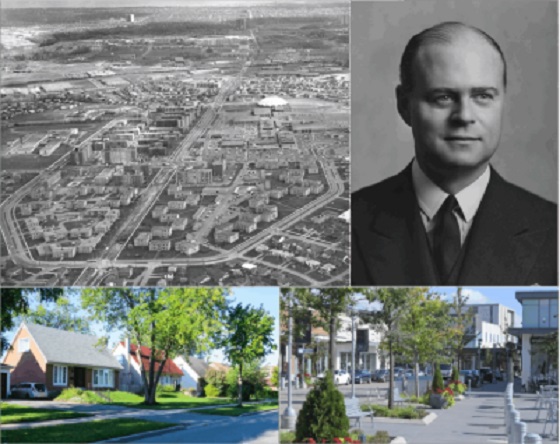
The postwar Canadian Dream: Don Mills, unveiled in 1953, was Canada’s first self-contained, suburban New Town. The brainchild of industrialist E.P. Taylor (top right), it offered young Canadian families the opportunity to abandon hectic downtown living for a more bucolic lifestyle in the suburbs.
By John Roe
Prime Minister Mark Carney says his plan to end Canada’s interminable housing crisis is to “Build Baby Build”. We can hope.
Unfortunately, Carney’s current plan is little more than a collection of unproven proposals and old policy mistakes including modular homes, boutique tax breaks, billions of taxpayer dollars in loans or subsidies and a new federal building authority.
The enormity of the task demands much broader thinking. Rather than simply encouraging a stacked townhouse here, and a condo there, Canada needs to remember what has worked in the past. And what other countries are doing today. With this in mind, Carney should embrace New Towns.
Also known as Garden Cities or Satellite Cities, New Towns are brand-new, planned communities of 10,000 or more citizens and that stand apart from existing urban centres. These are more than the suburbs reflexively loathed by so many planners and environmentalists. Rather, New Towns can offer a diverse mixture of living options, ranging from ground-level housing to built-to-purpose rental apartments and condominiums. As self-contained communities, they include schools, community centres along with shopping and employment opportunities.
New Towns represent the marriage of inspired utopianism with pragmatic realism. And they can provide the home so many of us crave.
Originally conceived in Britain during the Industrial Age, Canada witnessed its own New Town building boom during the post-war era. Communities built in the 1950s and 1960s including Don Mills, Bramalea, and Erin Mills in Ontario were all designed as separate entities meant to relieve population pressure on nearby Toronto. Other New Towns took advantage of new resource opportunities. Examples here including Thompson, Manitoba which sprang up around a nickel mine, and Kitimat, B.C., which was built to house workers in the aluminum industry.
While New Town development largely died off in the 1970s and 1980s, it is enjoying a revival today in many other countries.
Facing his own housing crisis and building on his country’s past experience, British Labour Prime Minister Keir Starmer has established a New Towns Taskforce that will soon choose 12 sites where construction on new communities will begin by 2029.
On the other side of the Atlantic — and the political spectrum — U.S. President Donald Trump — has proposed awarding 10 new city charters for building New Towns on underdeveloped federal land.
Meanwhile, several Silicon Valley billionaires are backing Solano, a planned city 60 miles east of San Francisco with a goal of creating a new community of up to 400,000 people by 2040. And Elon Musk is already building a New Town at Starbase, Texas as the headquarters for his SpaceX rocket firm.
To be fair, not every New Town has been a success. In the late 1960s, Ontario tried to build a brand-new city on the shores of Lake Erie known as Townsend. Planned as a home for up to 100,000 people, the project fizzled for a variety of reasons, including a lack of proper transportation links and other important infrastructure, such as schools or a hospital. Today, fewer than 1,000 people live there.
Despite the lessons of the past, there are three compelling reasons why Carney should include New Towns as part of his solution to Canada’s housing crisis.
First, by starting with a blank canvas, a New Town offers the chance to avoid the stultifying NIMBYism of existing home owners and municipal officials who often stand in the way of new development. The status quo is one of the biggest obstacles to ending the housing crisis, and New Towns are by their very nature new.
Second, because New Towns are located outside existing urban centres, they offer the promise of delivering ground-level homes with a yard and driveway that so many young Canadians say they want. Focusing growth exclusively in existing urban centres such as Toronto, Vancouver and Montreal – as Carney seems to be doing – will deliver greater density, but not fulfil the housing dreams of Canadian families.
Third, New Towns can herald a more prosperous and unified Canada for the 21 st century. New Towns could be built in regions such as Ontario’s Ring of Fire, rich with minerals the world demands. New Towns could also tighten the east-west ties that bind the country together. Further, this growth can be focused on areas with marginal farmland, such as the Canadian Shield, which in Ontario starts just a 90 minute drive north of
Toronto.
New Towns are already beginning to pop up in Canada. In 2017, for example, construction began on Seaton Community, a satellite town adjacent to Pickering Ontario that will eventually grow into six neighbourhoods with up to 70,000 residents. And this spring, the southwestern Ontario municipality of Central Elgin unveiled plans for a New Town of 9,000 residents on the edge of St. Thomas.
Having promised Canadians fast and decisive “elbows up” leadership, our prime minister should throw his weight behind New Towns. To begin, he could appoint a New Town Task Force, similar to the one in Britain to get to work identifying potential locations. Even better, he could simply say his government thinks New Towns are a good idea and let the private sector do all the heavy lifting.
If the millions of Canadians currently shut out of the housing market are to have any chance at owning the home of their dreams, New Towns need to be in the mix.
John Roe is a Kitchener, Ont. freelance writer and former editorial page editor of the Waterloo Region Record. The original and longer version of this story first appeared at C2CJournal.ca
-

 Brownstone Institute2 days ago
Brownstone Institute2 days agoFDA Exposed: Hundreds of Drugs Approved without Proof They Work
-
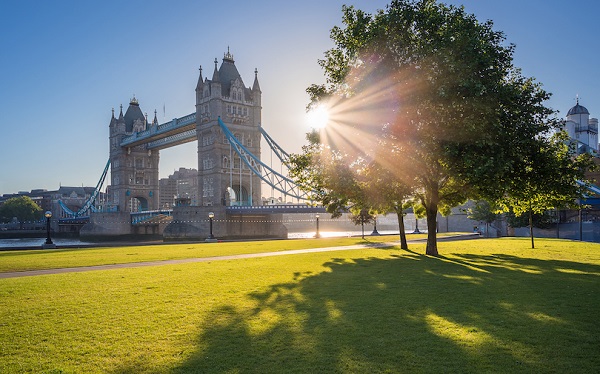
 Business1 day ago
Business1 day agoEurope backs off greenwashing rules — Canada should take note
-

 Automotive1 day ago
Automotive1 day agoPower Struggle: Electric vehicles and reality
-
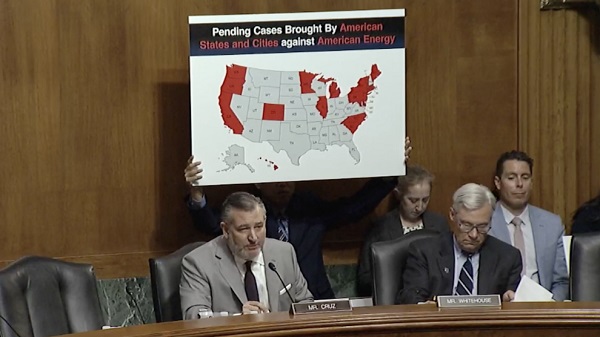
 Energy1 day ago
Energy1 day agoChina undermining American energy independence, report says
-

 Business1 day ago
Business1 day agoTrump on Canada tariff deadline: ‘We can do whatever we want’
-

 Automotive1 day ago
Automotive1 day agoElectric vehicle sales are falling hard in BC, and it is time to recognize reality.
-

 Business6 hours ago
Business6 hours agoCanada Caves: Carney ditches digital services tax after criticism from Trump
-

 Crime6 hours ago
Crime6 hours agoSuspected ambush leaves two firefighters dead in Idaho
